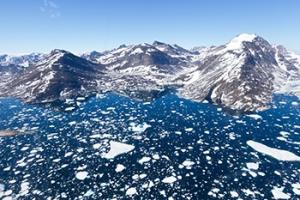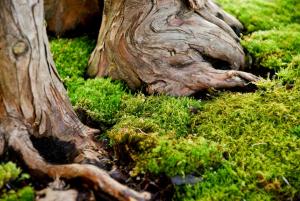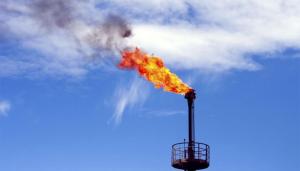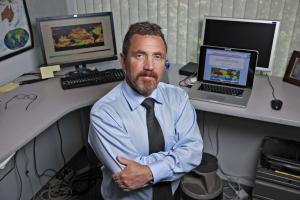LAB REPORT
Science and Technology Making Headlines
Dec. 16, 2016


NIF & Photon Science postdoctoral researcher Leily Kiani tests a new amplifier that could double the bandwidth of fiber-optic cables. Photo by Jason Laurea/LLNL.
Double down
Lawrence Livermore researchers have developed a new kind of amplifier that could double the capacity of fiber optic cables.
Most of the data for the Internet travel on fiber-optic cables, which are made up of bundles of threads that transmit laser light. As the fiber gets longer, however, power is lost due to attenuation. In the late 1980s and early '90s, researchers discovered that they could mitigate this loss by developing inline fiber-optic amplifiers.
The team discovered that from 1,390 nanometers (nm) to 1,460 nm there is significant positive optical gain, and this new fiber generates laser power and optical gain with relatively good efficiency. This discovery opens up the potential for installed optical fibers to operate in a transmission region known as E-band, in addition to the C and L bands where they currently operate — effectively doubling a single optical fiber's information-carrying potential.


Researchers have tracked the erosion rates in East Greenland.
Ice sheet feels the heat
At four times the size of the state of California, the ice sheet covering Greenland is enormous. Locked up in its ice is enough water to raise global sea level by more than 20 feet (6 metres) - so knowing how and when is will melt is essential.
To understand the future of the ice sheet, researchers have tried to understand its past.
Using marine sediment cores containing isotopes of aluminum and beryllium, a group of international researchers including one from Lawrence Livermore has discovered that East Greenland experienced deep, ongoing glacial erosion over the past 7.5 million years.
The research has potential implications for how much the ice sheet will respond to future interglacial warming.


Scientists have found that, for now, peat doesn’t succumb to the Earth’s warming easily.
For peat’s sake
Deep stores of carbon in northern peatlands may be safe from rising temperatures, according to a team of researchers from several U.S.-based institutions, including Lawrence Livermore.
The study details experiments suggesting that carbon stored in peat — a highly organic material found in marsh or damp regions — may not succumb to the Earth's warming as easily as scientists thought.
That means if these northern peatlands — found in the upper half of the northern hemisphere — remain flooded, a substantial amount of carbon will not be released into the atmosphere.


: Lawrence Livermore National Laboratory chemist Sarah Baker holds a gas chromatography vial used to measure the amount of methanol produced by the enzyme-embedded polymer. Photos by George Kitrinos/LLNL
Making biology work better
Methane is more potent than carbon dioxide, but it’s difficult to capture it.
Lawrence Livermore has been working on more exotic solutions to capture methane, which is difficult to filter out of a stream of gaseous emissions because it doesn't interact as readily as carbon dioxide does.
They've come up with a solution that would enable captured methane to be converted into a liquid fuel, which would be easier to transport and use. Researchers extracted enzymes from methanotrophs — methane-eating bacteria — and mixed them with plastics to create a 3D-printed material that could convert gaseous methane into methanol at room temperature and pressure.
"We can use materials to make biology work better," said Sarah Baker, a chemist at Lawrence Livermore National Laboratory.


LLNL scientist Ben Santer helped author an open letter on climate change.
Standing up for climate change
Citizens in this country are divided on the issue of climate change: Some believe that the threat is real and huge; others are not convinced. It would seem that scientists are also not in complete agreement.
However, one Lawrence Livermore scientist knows where he stands when it comes to climate change.
On Sept. 20, an open letter on climate change was published and signed by 376 members of the National Academy of Sciences, including 30 Nobel Prize winning scientists. The letter states that “Human-caused climate change is not a belief, a hoax, or a conspiracy. It is a physical reality.”
Benjamin Santer, of Lawrence Livermore National Laboratory and one of the signers of the open letter on climate change has said: “If you know the road ahead is washed out, you don’t keep driving down it...This is an issue that will define us. How we respond to climate change will be the legacy of our generation.”





